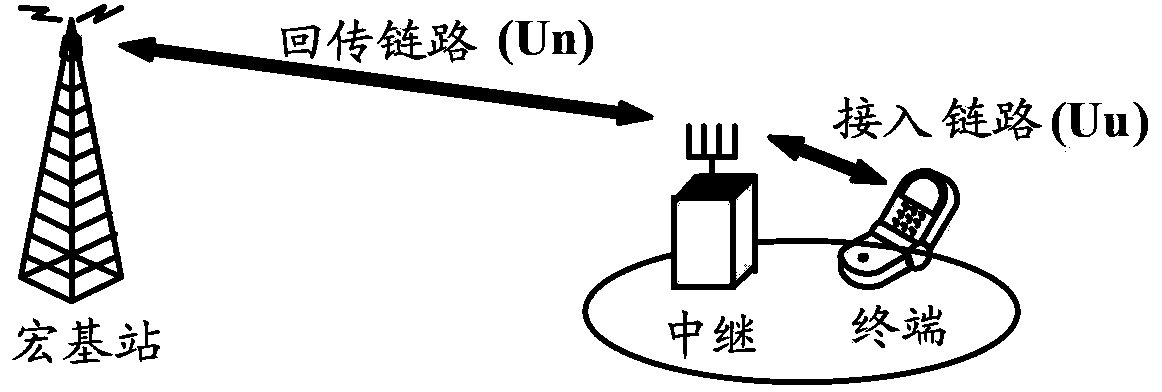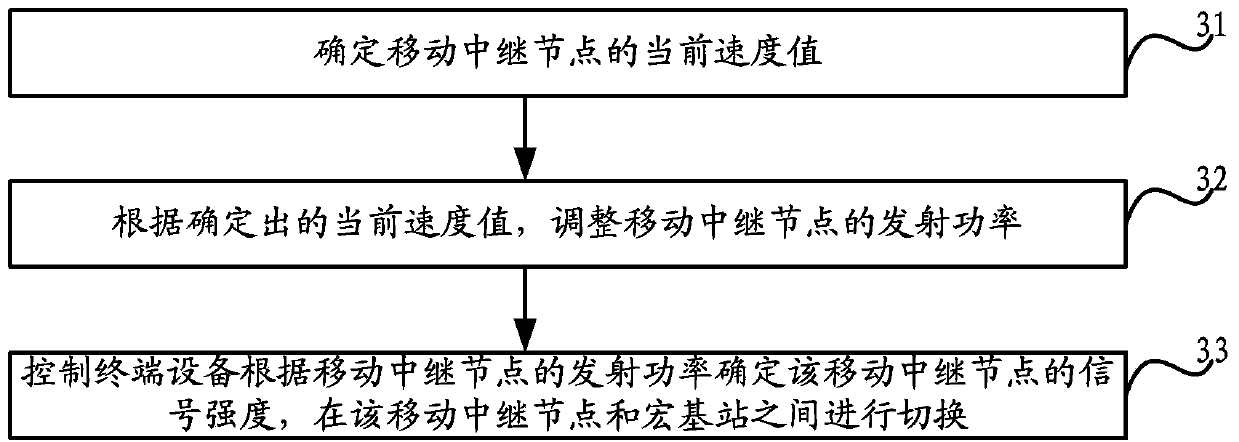Terminal equipment switching control method, mobile relay node and terminal equipment
A technology for mobile relay and terminal equipment, applied in the field of mobile relay nodes and terminal equipment, can solve the problems of extra consumption of wireless backhaul link air interface resources, increased network load, and heavy network load of mobile relay nodes.
- Summary
- Abstract
- Description
- Claims
- Application Information
AI Technical Summary
Problems solved by technology
Method used
Image
Examples
Embodiment 1
[0034] Embodiment 1 of the present invention proposes a method for controlling switching of terminal equipment in a relay system, such as Figure 3a As shown, on the network side, the specific processing flow is as follows:
[0035] Step 31, determine the current speed value of the mobile relay node.
[0036] The mobile relay node is set on a moving object, and it has two states of operation and rest. Preferably, in the technical solution proposed here in the embodiment of the present invention, a mobile relay node on a high-speed rail is taken as an example for detailed elaboration. Then when the high-speed rail is running, the mobile relay has the same speed value as the high-speed rail. When the high-speed rail enters the station and is at rest, the mobile relay node is also in a static state. At this time, the current speed of the mobile relay node is 0.
[0037] Specifically, the current speed value of the mobile relay node can be determined by using, but not limited t...
Embodiment 2
[0061] Among them, in the heterogeneous network (HetNet) system architecture, there are usually two types of nodes, high-power nodes and low-power nodes. High power nodes such as macro base stations. A low power node (LPN, low power node) may include, but is not limited to, a micro station (pico), a relay node (relay), and the like. The coverage of the signal transmitted by the LPN is small. In order to allow more terminal devices to be connected (offload) to the LPN to play a role in offloading, a cell coverage extension (RE, range extension) technology is proposed. RE specifically means that in the traditional cell selection or reselection process, the terminal device generally selects the cell with the largest Reference Signal Receiving Power (RSRP, Reference Signal Receiving Power) for access. After the range extension technology is proposed, when the terminal equipment performs cell selection or reselection, the terminal equipment adds a bias value (bias) to the RSRP of ...
Embodiment 3
[0086] Embodiment 3 of the present invention Here, a method for controlling switching of terminal equipment in a relay system is proposed, such as Figure 5a As shown, the specific processing flow is as follows:
[0087] Step 51, determine whether there is a mobile relay node in the station that the terminal device can currently connect to, if the judgment result is yes, then execute step 52, otherwise end the process.
[0088] Wherein, the stations that the terminal device can currently connect to include a relay node, a macro base station, a micro station, or a mobile relay node. According to the detected cell physical identifier, determine whether there is a mobile relay node in the site that the terminal device can currently connect to, where the mobile relay node is pre-configured with a reserved cell physical identifier for identifying the mobile relay node; or according to The received relay indication message determines whether there is a mobile relay node in the site...
PUM
 Login to View More
Login to View More Abstract
Description
Claims
Application Information
 Login to View More
Login to View More - Generate Ideas
- Intellectual Property
- Life Sciences
- Materials
- Tech Scout
- Unparalleled Data Quality
- Higher Quality Content
- 60% Fewer Hallucinations
Browse by: Latest US Patents, China's latest patents, Technical Efficacy Thesaurus, Application Domain, Technology Topic, Popular Technical Reports.
© 2025 PatSnap. All rights reserved.Legal|Privacy policy|Modern Slavery Act Transparency Statement|Sitemap|About US| Contact US: help@patsnap.com



